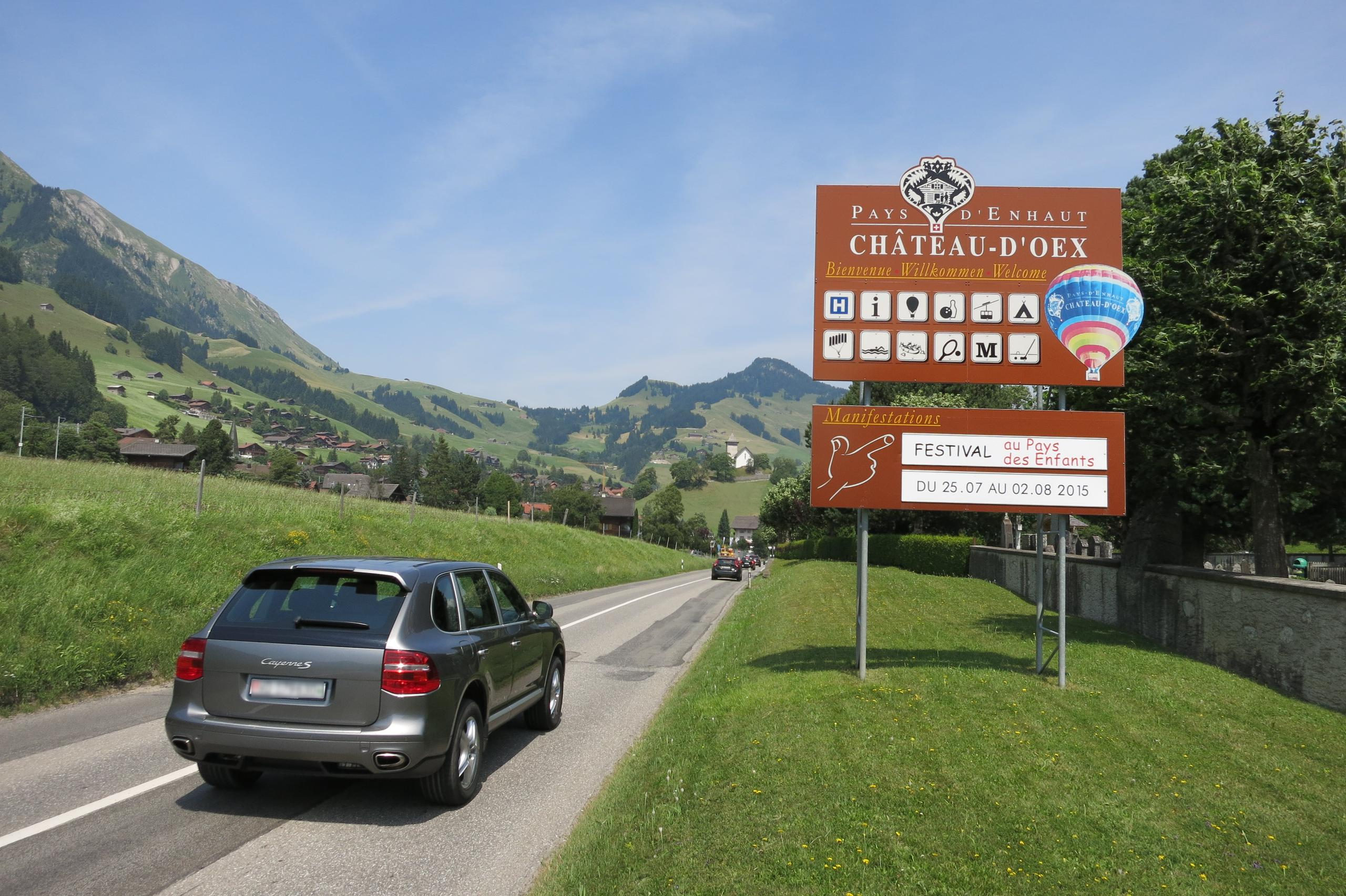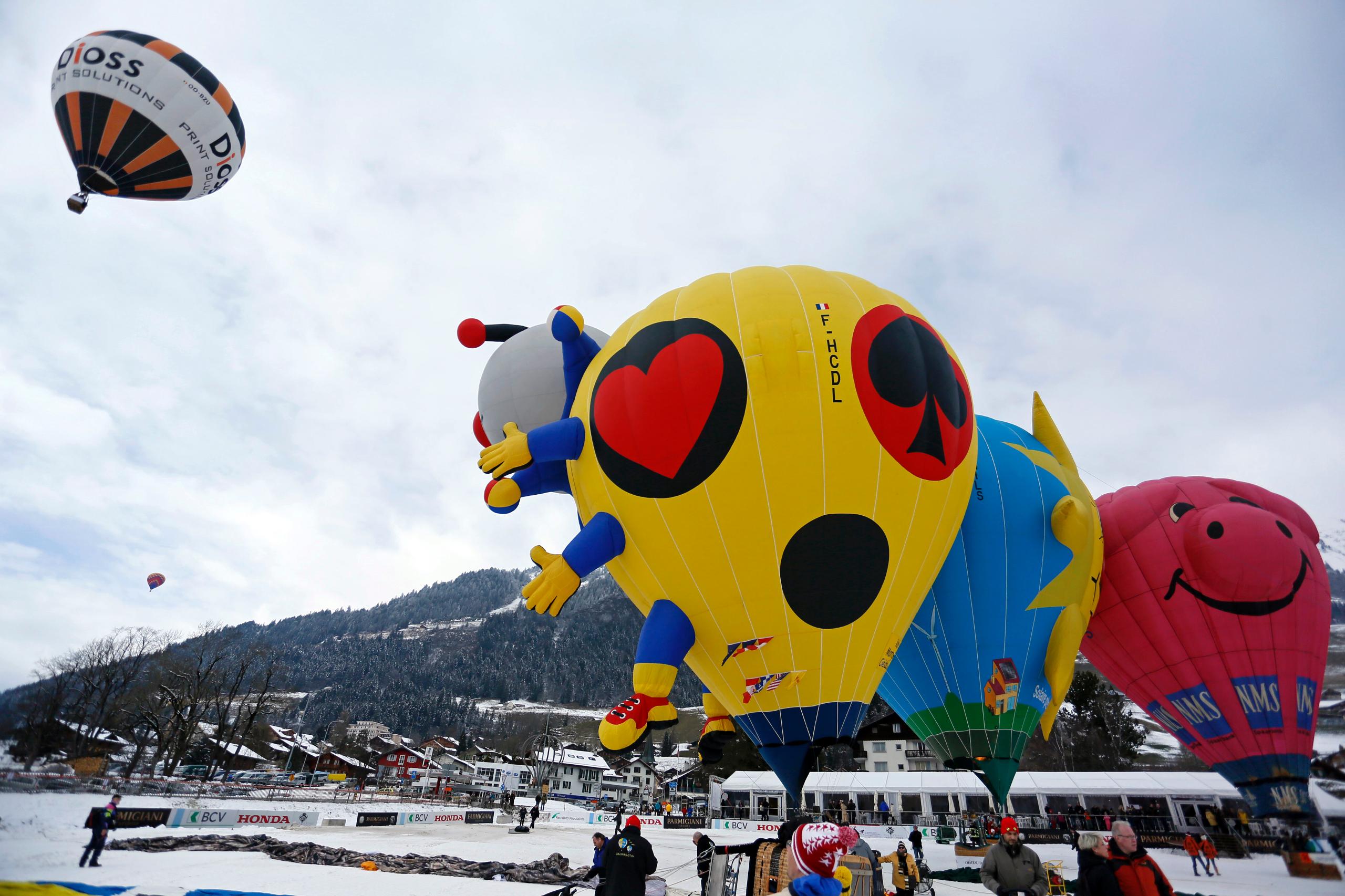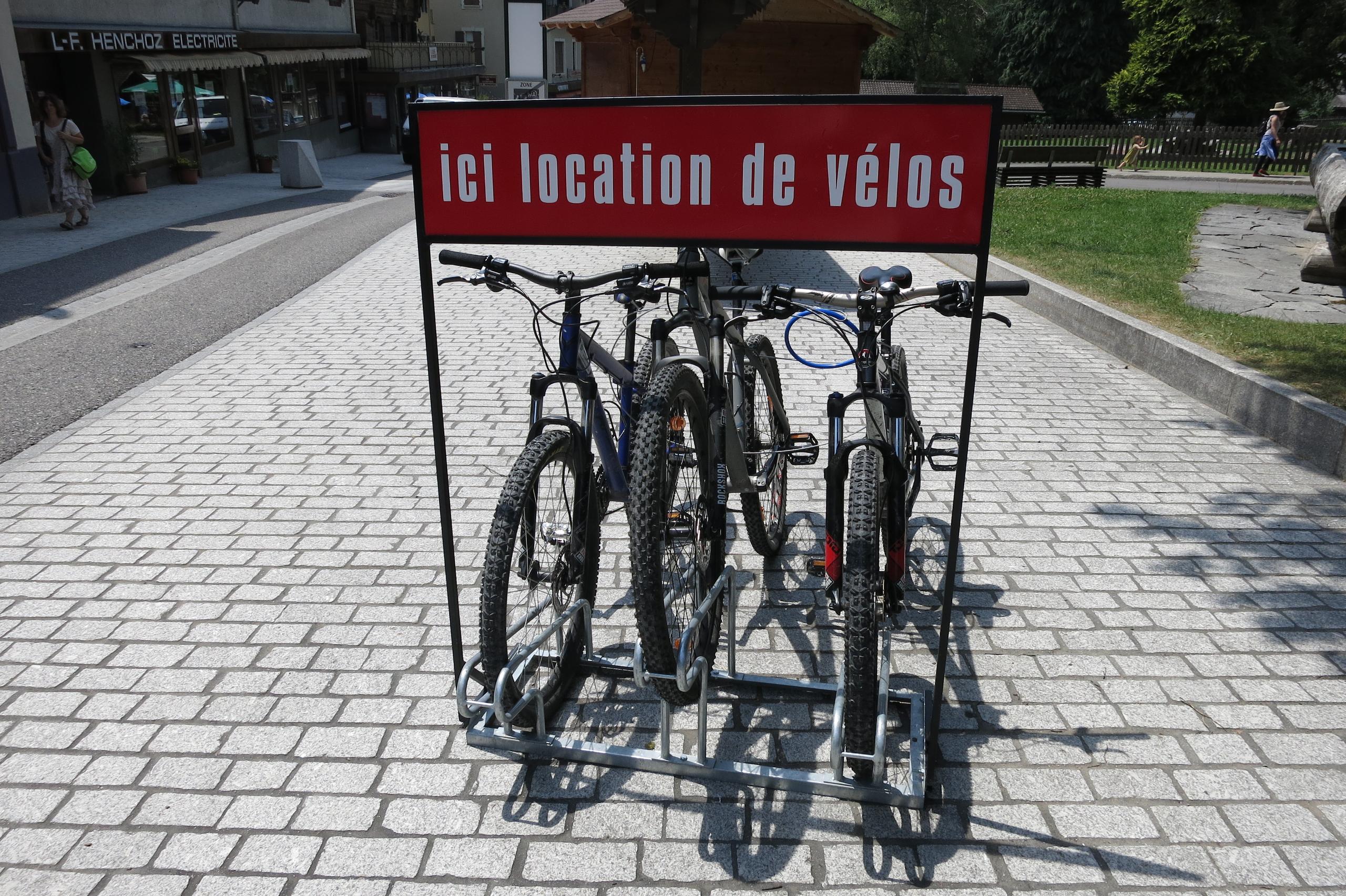How to pull in tourists all year round

The picturesque Swiss alpine village of Château-d’Oex is better known for its annual balloon festival than its skiing, which is currently under threat. swissinfo.ch reports from the mid-altitude resort as it ponders its long-term future as a tourist destination.
It is midday in Château-d’OexExternal link, pronounced “deh”, a mountain village nestling in one of the Pays-d’Enhaut valleys east of Lake Geneva. The mercury is nudging 30 degrees Celsius. In bright blue skies, tiny clouds cling to low peaks jutting through dark green pine forests.
But the perfect weather conditions do not seem to have helped attract many visitors this week. In general, summer bookings are down partly due to the strong Swiss franc. This year Swiss and foreign visitors seem to prefer cheaper destinations.
All the high street seems to lack is tumbleweed. On the Relais de la Haute Gruyère cafe terrace, where a simple bowl of pasta costs CHF24 ($25), the tables are mostly empty.
Yet the strong franc is not the sole reason for the quiet atmosphere. On Mondays, Château-d’Oex pretty much closes down anyway, even in the high summer season.
The village may not be busy but some of the few older tourists seemed happy with their holiday.
“There is tons of walking, climbing and funiculars. And all the buses are synchronised,” said John Deffenbaugh, an American living in Scotland. Just do not come on a Monday, as that is when the lifts are also shut, preventing quick access to the upper trails.
While the current summer season seems to have got off to a slow start, tourist officials say things should liven up at the end of July when 18,000 children and their parents take over the resort for the third Festival au Pays des Enfants.
This festival for families joins a growing list of initiatives to pull in visitors all year round, some of which have had considerable success. For the past 32 years, up to 25,000 people flock to the annual International Hot Air Balloon FestivaExternal linkl held in the valley every January.

“Four-season tourism” – providing a varied range of tourist and sporting activities throughout the year – has become a buzzword locally. The notion gained greater prominence in March, when canton Vaud announced the winners and losers of its long-term 2020 sustainable tourism strategy for the Vaud Alps, which includes a CHF100 million investment to regenerate local alpine resorts.
While several resorts like Les Diablerets and Villars were promised cantonal funds to renew ski infrastructure, Château-d’Oex was turned down for a major ski development project at the nearby Mont-Chevreuils area.
“An all-winter ski approach is not the future of the Vaud Alps,” said Vaud Economics Minister Philippe Leuba in March.
Château-d’Oex will get a smaller contribution for a beginner’s slope project at nearby La Braye.
But the question remains: what next? Will the commune help provide the rest of the funds or could skiing slowly die out in Château-d’Oex?
Serious blow
The news was a serious blow to Château-d’Oex, which had been pinning its long-term hopes on the ski development. The mood among ski fans and families who have built their businesses on winter sports is sombre.
“We were conned,” said an angry Jean-Michel Bach, owner of Bach sport shop. “If we don’t have skiing, I don’t know what we’ll have. It’s the backbone of our season.”
The resort now finds itself at a crossroads. Between 55-75% of turnover is earned in winter. Yet changing visitor habits and global warming are likely to have a big impact in the years ahead. Good weather conditions are less and less certain.
While locals who have built their livelihoods on skiing ardently defend winter sports, each year there are 3% fewer skiers.
Two commissions have been set up to examine the problem: one at regional level to assess the long-term needs for the Pays-d’Enhaut area, and another to look at skiing at Château-d’Oex. The latter should deliver a report in autumn.
Rethink activities
There is a lot of uncertainty at the moment as the resort reflects on where it goes from here, admitted Frédéric Delachaux, director of Pays-d’Enhaut Tourism.
“We have prevented skiing disappearing in the short term, but there’s a possibility it could end in the next five years,” he said.
The young director is trying to remain upbeat. “I see this as an opportunity for us to rethink things. But we should no longer think just in terms of skiing; to survive long-term, we need to re-orientate our activities throughout the year.”
He insists that diversification is already underway. On top of the growing list of events and festivals, other changes should make a big difference. The local train station is undergoing a CHF22-million facelift in order to welcome the longer Trans Golden Pass tourist trains – and thousands more visitors – in 2018 shuttling between Montreux and Interlaken.

Near the station, the historical Musée du Vieux Pays d’EnhautExternal link museum is also due to be extended and become an “international reference centre” for traditional paper cutting. The hot air museumExternal link and the heritage left by French artist Balthus in nearby Rossinière will also be developed.
While many small hospitals are closing throughout Switzerland, the regional authorities are taking a risk to launch a so-called “health pole”, which in 2018 will bring together Château-d’Oex’s local hospital, an old people’s home and a regional home help centre. One of the aims is to renew the tradition of the alpine village as a refuge for sick visitors where they can convalesce.
Another activity which could open up the region is mountain biking. Walkers are spoilt for choice with around 250 kilometres of footpaths and mountain trailsExternal link. In the valley there are plenty of cycle routes, but higher up there is very little for mountain bikers.

“We could set up mountain bike paths at La Braye and build a restaurant, but it’s a question of money,” said Bach.
He criticised the fact that La Braye hosted the 1997 Mountain Bike World Championships. Special downhill routes were built for the occasion, but later taken down and not replaced.
Nonetheless, there are plans for the Videmanette region, whose cable car links neighbouring Rougemont to Gstaad, to develop a new downhill mountain bike route. But it will depend on Gstaad and the local lift company, said Delachaux.
The young director admitted that finding and promoting alternative tourist activities all year round instead of skiing was a constant but unavoidable battle.
“For my generation these changes are easier to accept,” he said. “But it’s obvious that for people who have built their lives on skiing it’s difficult. But we don’t have any choice.”
Château-d’Oex
Château-d’Oex is a mountain village of 5,000 residents situated at 1,000 metres in the Pays d’Enhaut region, halfway between the Bernese Oberland resort of Gstaad and the town of Gruyères in canton Fribourg. It is linked to the Lake Geneva region by the Col de Mosses pass or the Montreux-Bernese Oberland Railway.
It is part of the Gruyère Pays-d’Enhaut Regional Nature Park, which includes nature reserves such as the Pierreuse or the valley of L’Etivaz, known for its cheese. The region also offers a large network of cycling and walking trails, as well as water sports on the river Saane. Thanks to its favourable microclimate, Château-d’Oex has developed into a popular destination for hot-air balloon enthusiasts.
The La Braye ski region near Château-d’Oex has seven ski lifts and 40km of slopes. Other nearby ski areas include Gstaad, Rougemont and Les Mosses-La Lècherette.
The number of overnight stays in Château-d’Oex rose steadily from 42,332 in 2011 to 54,324 in 2014. Most visitors come from Switzerland (18,995 in 2014), Britain (1,731), France (4,088), Germany (866), Belgium (846) and Italy (1,450).

In compliance with the JTI standards
More: SWI swissinfo.ch certified by the Journalism Trust Initiative










You can find an overview of ongoing debates with our journalists here . Please join us!
If you want to start a conversation about a topic raised in this article or want to report factual errors, email us at english@swissinfo.ch.